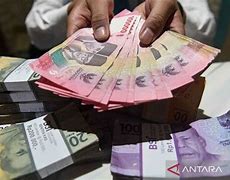
Reign title: K’AI-HSI, AD 1205-1207
Under the K’ai-Hsi title bronze coins were issued in both the 1 and 2 cash denomination, with date marks but not mint marks. The 1 cash average (3 specimens) 3.44 grams, 24 mm. The 2 cash average (3 specimens) 5.73 grams, 28 mm.
S-857. Bronze 1 cash. Obverse : “K’ai-Hsi T’ung-pao”. Reverse : “Yuan” for year-1 (AD 1205). Value not yet recorded.
S-858. Bronze 1 cash. Obverse : “K’ai-Hsi T’ung-pao”. Reverse : Year mark for year-2 (AD 1206). F $4.00 VF $6.50
S-859. Bronze 1 cash. Obverse : “K’ai-Hsi T’ung-pao”. Reverse : Year mark for year-3 (AD 1207). Value not yet recorded.
S-860. Bronze 2 cash. Obverse : “K’ai-Hsi T’ung-pao”. Reverse : “Yuan” for year-1 (AD 1205). Value not yet recorded.
S-861. Bronze 2 cash. Obverse : “K’ai-Hsi T’ung-pao”. Reverse : Year mark for year-2 (AD 1206). &Value not yet recorded.
S-862. Bronze 2 cash. Obverse : “K’ai-Hsi T’ung-pao”. Reverse : Year mark for year-3 (AD 1207). Value not yet recorded.
The iron issues of the K’ai-hsi period are for the most part fairly standard. There are issues for year 1, 2 and 3 from each of the three principle mints of T’ung, Han and Ch’un, but only in the two cash denomination.
S-863 to 871. Iron 3 cash. Obverse : “K’ai-Hsi T’ung-pao”. Reverse : date and mint mark. These will be written up at some future date.
Schjoth listed the following three issues that do not fit the standard pattern but appear to be of a 3 cash denomination.
S-872. Iron 3 cash. Obverse : “K’ai-Hsi T’ung-pao”. Reverse : blank. Average (1 specimen) 10.93 grams. The blank reverse on this specimen seems rather odd and does not fit with other issues of this period. I suspect Schjoth’s specimen was simply too corroded and what ever was on the reverse was not visible. Value not yet determined.
S-873. Iron 3 cash. Obverse : “K’ai-Hsi T’ung-pao”. Reverse : “SAN CH’UAN SSU ERH” (thee Ch’uan twenty four). It seem likely that 3 Ch’uan means third year at Ch’uan mint, but the meaning of the 24 is as yet unclear (Schjoth speculates it is a mold number that seem unlikely to me). Average (1 specimen) 11.58 grams. value not yet determined.
S-874. Iron 3 cash. Obverse : “K’ai-Hsi T’ung-pao”. Reverse : “LI LIU SHIH” (LI sixty). LI may be the mark for the Shao-Hsing mint in Li-chou. The meaning of the number sixty is as yet uncertain. Average (1 specimen) 9.35 grams.
Reign title: SHAO-TING, AD 1228-1233
S-967-972, 975 bronze 1 cash. Obverse: “SHAO-TING T’UNG PAO”. Reverse: mark indicating year of issue. All years from 1 to 6 been documented.
F $5.00 VF $9.00
S-973, 974, 976-979 bronze 2 cash. Obverse: “SHAO-TING T’UNG PAO”. Reverse: mark indicating year of issue. Only year 1 has been documented. We have not yet determined a value for this type.
Schjoth describes his example #975 as a clipped two cash, but if the diameter within the rims are drawn accurately, we so no reason to believe it was not cast as a one cash.
S-980 iron 1 cash. Obverse: “SHAO-TING T’UNG PAO”. Reverse: “CH’UN SAN” (Ch’un mint year 3). Only year 3 has been documented but we would expect others to exist. We have not yet determined a value for this type.
Reign title: CHIA-T’AI, AD 1201-1204
S-843. Bronze 3 cash. Obverse : CHAI T’AI TUNG PAO (read clockwise from the top). Reverse : blank. Average (1 specimen) 34.6 mm, 10.54 grams.
S-852 is shown in Schjoth’s illustration as a blank reverse, but in the text he notes it is a blurred reverse, indication something was there.
S-853 is an unusual coin. It has the “LI” mint mark at the top and the numbers 9 and 6 (or 96) at the bottom. Neither digit can be a date. This seems to be related to S-829-833 above although it is not over-sized as they were. We do not yet have an explanation this.
S-854-856 are also unusual.
On the top of the reverses @
they all have the Chuan mint mark with the digits 1, 2 and 3@ beside. This appear to be year marks. At the bottom they each have another double digit mark, 8-3@ (or 83), 93 (or 93) and 10-4 (or 40). As yet we do not have an explanation for them.
reign title: HSIEN-YUNG, AD 1065-1074
S-1067. Bronze 1 cash. Obverse: “HSIEN-YUNG T’UNG-PAO”. Reverse: blank. These very somewhat in weight. Th average of what we have seen (3 specimen) is 24.3 mm and 3.53 grams, but we have seen them from 2.75 to 3.9 grams. As with most Liao coins, this tends to be a a poorly cast issue. It is also the most common coin of the Liao Dynasty.
Emperor LI TSUNG, AD 1225-1264
Not that Schjoth (top of page 40) notes that Li tsung’s government was over-burdened with the difficulties of war. This must be considered when interpreting this next series of coins. It might help explain the unusual series S-983-990. Is the stopping iron issues (from S-991 on) related to this war?
Emperor T’IEN CHAAD 1101-1125
Emperor JEN TSUNGAD 1140-1193
Reign title: CHING-TING, AD 1260-1264
S-1038-1041, bronze 1 cash. Obverse: “CHING-TING YUAN-PAO”. Reverse: mark indicating year of issue. Years -1, 2, 3 and 4 are known.
VG $3.50 F $6.00 VF $8.50
S-1042-1048, bronze 2 cash. Obverse: “CHING-TING YUAN-PAO”. Reverse: mark indicating year of issue. All years from 1 to 5 have been documented. As well, Schjoth has one example of year 4 with a crescent at the right. We have not yet determined a value for these.
reign title: T’IEN-SHENG, AD 1149-1168
As S-1078 but copper 1 cash. Obverse: ‘T’IEN-SHENG YUAN PAO”. Reverse: blank. Average (13 specimens) 23.9 mm, 3.51 grams.
F $12.00 VF $25.00
These are always well cast coins with bold characters and seldom seen in a grade below gF. The the brass has a very distintive light-brown tone to it. Schjoth says that the copper of this type is rare and that iron is common, but we currently find the opposite to be true
reign title: TA-AN, AD 1085-1094
S-1070-71.Bronze 1 cash. Obverse: “TA-AN YUAN-PAO”. Reverse: blank. Average (1 specimen) 24.5 mm, 3.51 grams. There are some varieties in this type, with Schjoth noting one with a star hole, and another with a small dot in the upper left corner. We have owned a specimen with a small nail mark on the reverse. These variations would be worth a premium. These coins tend to be poorly cast with slightly irregular rims.
F $95.00 VF $135.00
The presence of a dot or nail mark on the reverse, or a star hole on a coin of this type is probably intentional, as similar star holes are very common on Northern Sung coins of this same period. Their meaning is as yet uncertain.



